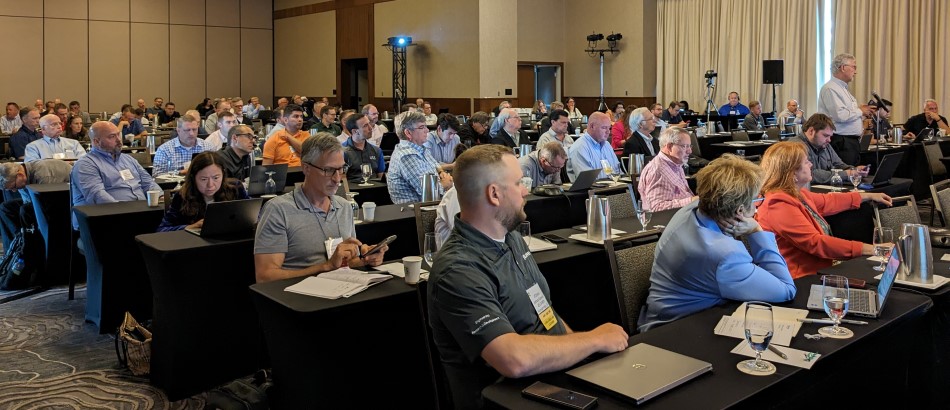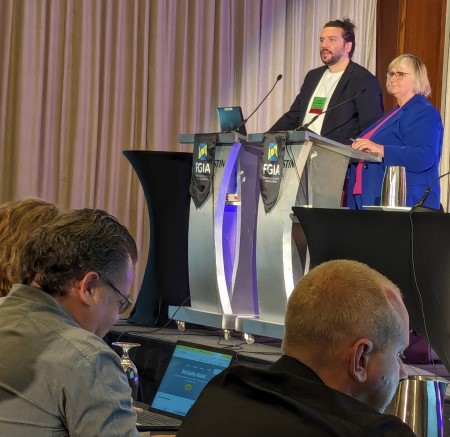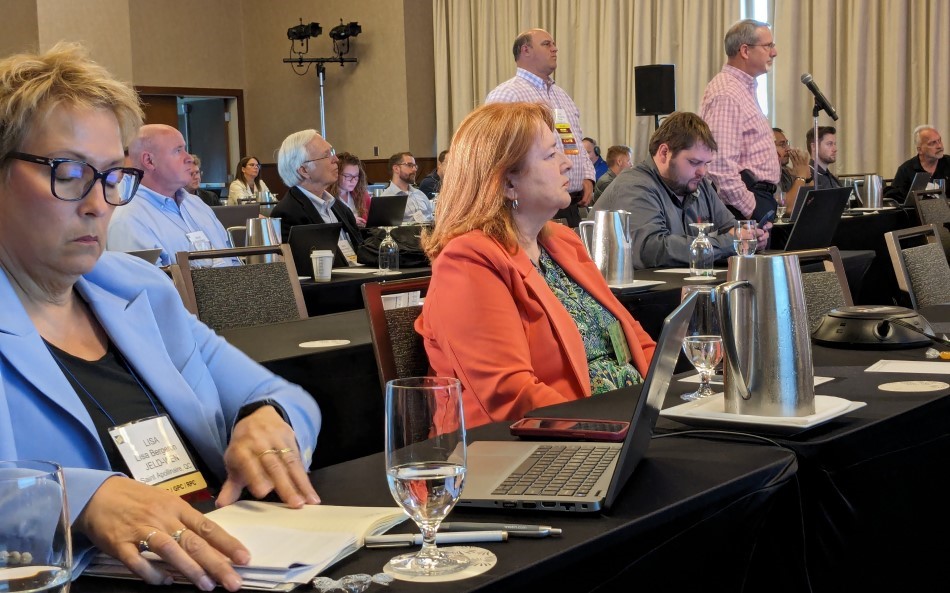
Known as North America's number one host city for international events—home to the famous Cirque de Soleil, and Summer Olympics, Expo 67 and Formula One host—Montreal, Canada, was a perfect choice for the Fenestration and Glazing Industry Alliance's Summer Conference. This year's theme "Start Your Engines—On Track for Success" reflected not just the city's fervor with the upcoming Canadian Grand Prix but also getting attendees "revved up" on a number of topics, including the latest plastics regulation, sustainability and embodied carbon developments, natural disaster codes and standards, and fenestration security and testing advancements.
Plastics reckoning
Late last year, the United States Environmental Protection Agency took action against per- and polyfluoroalkyl substances, more commonly known as PFAS, under the authority of the Toxic Substances Control Act, part of the Biden-Harris Administration’s strategic roadmap to combat PFAS pollution. On a global level, polyvinyl chloride, or PVC, the world’s third-most widely produced synthetic polymer, is a prime target of the Intergovernmental Negotiating Committee on Plastic Pollution. With more than 50 million tons produced each year for everything from window frames and doors to fascia and soffit boards, ambitious mandates to end—not just limit—their production is a prime concern for fenestration companies.

Dr. Peter Mirtchev from the Chemistry Industry Association of Canada discussed upcoming regulations and initiatives, including the new Canadian Federal Plastics Registry, which aims to consolidate data on plastic flows to promote recycling and investment. Despite final regulations being published in 2022, Mirtchev emphasized the need for improved recycling infrastructure over outright bans.
"The government has moved very fast... rather than bans, we need to invest in recycling infrastructure and innovation to harness the $8 billion value of plastics... and recirculate them in the economy," says Mirtchev. "From a regulatory perspective, plastics are high on the radar and will continue to be a focus. We are trying to solve plastic pollution, not eliminate plastics entirely."
Additionally, he highlighted the development of a global United Nations treaty on plastic pollution, set to be legally binding by the end of 2024, with ongoing negotiations aiming to address plastic pollution without completely eliminating plastic use.
In both sessions and hallway chats, PFAS dominated conversations. The FGIA's Kathy Krafka Harkema reported that there are currently around 5,000 PFAS chemicals in Canada, with an astounding 15,000 in the U.S. "We're probably going to be talking about [PFAS] for a long time... it’s the topic of regulatory news all across the country."
The EPA's National Primary Drinking Water regulation, effective June 25, 2024, marks the largest-ever federal investment toward PFAS. She urged door and window companies to seriously consider the related EPA reporting requirements. "Some of your products may or may not have PFAS in them," says Harkema. "With the EPA, every report you issue to them and that you're subject to is open to the public. This toxic release inventory report is no exception, because this is a public database and available online."
Labeling energy efficiency
Significant attention was given to proposed amendments to the Energy Efficiency Regulations for Manufactured Fenestration Products in Canada. In short, the new proposed Canadian regulation for factory-built fenestration products will require anyone selling products in Canada to report energy data to Natural Resources Canada, and include a new label for doors and windows in Canada.
Adam Buist from Natural Resources Canada explained that new labeling requirements for doors and windows will centralize existing certification programs without imposing minimum performance standards. The labeling, set to be mandatory from January 1, 2028, will include detailed product information and energy efficiency ratings. The initiative aims to create a "level playing field" and extend coverage to retrofit markets, focusing on information gathering rather than enforcing performance criteria.
Cutting the carbon
The role of embodied carbon in the stages of a product's lifecycle was another environmental topic that generated interest. Dr. Kayla Natividad explained the differences among Product Category Rules, or PCRs, for flat glass, processed glass and fenestration assemblies. She highlighted key embodied carbon policies such as Buy Clean programs, climate action plans and zoning policies. Natividad defined embodied carbon as the greenhouse gas emissions from the early stages of a product's life cycle, contrasting it with operational carbon. She emphasized the importance of quantifying embodied carbon through PCRs, Life Cycle Assessments, or LCAs, and Environmental Product Declarations, also known as EPDs.
Natividad pointed out the growing number of regulatory policies worldwide, particularly in Canada and the U.S., and discussed the significance of PCRs in future legislation. She noted that many procurement programs focus on flat glass, especially in public projects, and predicted that the Environmental Protection Agency might standardize PCRs soon. Natividad also anticipated an expansion of eligible materials to include processed glass and full fenestration, supported by advancements in EPD generator tools.
"My crystal ball predicts that the EPA will standardize PCRs, and our processed glass PCR is about to expire," says Natividad. "There is a lot of work going into EPD generator tools to help... Expect expansion of eligible materials, such as maybe processed glass and full fenestration."
Understanding and clearly communicating these concepts to policymakers is crucial for effective regulation and legislation in the future. "Policy writers aren't material experts," she says, urging fenestration and glazing industries to pay attention and get involved.

Setting the standard
Tanya Dolby with Intertek covered the definitions, measurements, codes and testing standards for various natural disasters, including hurricanes, tornadoes, earthquakes and floods during her session "Natural Disaster Standards and Testing." A passionate advocate on this topic for many years, Dolby highlighted the evolution of building codes since Hurricane Andrew in 1992 and the specific testing standards for hurricane impact, such as wind zones and projectile testing.
For tornadoes, she discussed the unpredictability and the Enhanced Fujita Scale, noting that two-thirds of the U.S. is tornado-prone. She also explained earthquake measurements using the Richter Scale and recent shake table testing, referencing the NHERI TallWood Project. Finally, Dolby covered the flood loads that are addressed in Chapter 5 of ASCE/SEI 7-22, along with other relevant flood standards.
Vinyl Interactive Workshop
Jean Marois with Thermoplast Extrusions led the FGIA Vinyl Interactive Workshop on vinyl profile testing—covering welding, boding, ventilation and color retention—giving hands-on demonstrations of a portable testing apparatus that did corner weld breaks to show how to measure corner strength in accordance with AAMA 320.